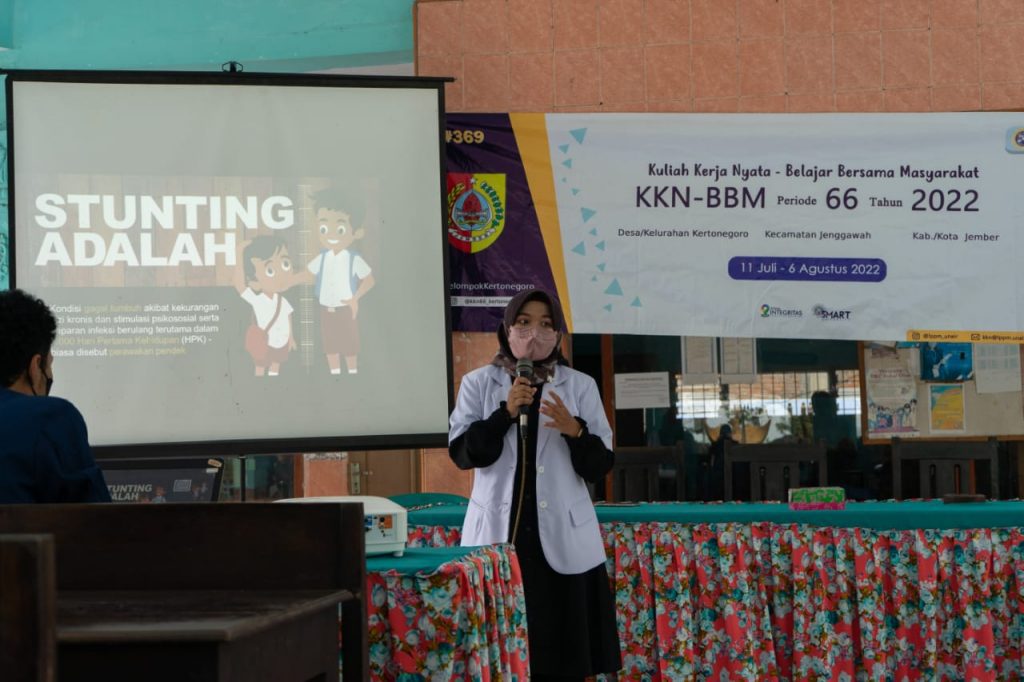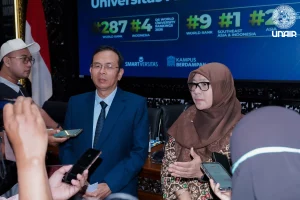UNAIR NEWS – Indonesia is one of the countries with enormous problem of nutrition. Stunting is a disease caused by chronic lack of nutrition and psychosocial stimulation which results in the obstructed child’s growth. In this regard, 66th KKN BBM Kertonegoro Group, Jenggawah Sub-district, Jember Regency held a stunting dissemination to villagers.
The survey results show the lack of villagers in taking advantage of abundant nutrition, which has been a culture. Therefore, there are many toddlers with abnormal body postures according to their age.
Carla Fitriana Sukma as the person in charge of the activity stated,
The activity started with a thorough dissemination regarding the needs of residents for the stunting problem. Then, it was followed by free health check-ups to all residents. The event was held on Wednesday, July 27, presenting Faradila Budi Saputri dr as a general practitioner of Jember Hospital. There was a great enthusiasm from the residents as some of the points discussed are relevant to the life of the people of Kertonegoro Village.
Faradila explained, stunting is a condition where a toddler has length or height more than minus two median standard deviations according to the child growth standard by WHO. Currently, around 8 million Indonesian children experience suboptimal growth, and one in three of these children is stunted.
“Prospective stunting mothers have the potential to give birth to stunting babies, including prospective mothers with chronic energy deficiency (KEK) who do not change their diet during pregnancy,” she said.
Likewise, socio-cultural factors that are passed down between generations, such as poverty, lack of access to basic needs, inability to provide nutritious food for families, and unsupportive environmental conditions. They make the stunting problem difficult to intervene and it goes on through the years.
Faradila said that the main challenge in changing behavior to prevent stunting lies in the consumption pattern of children. The consumption pattern of stunting prevention lies in the consumption behavior of macronutrient deficiencies, animal protein, vegetables and fruit, and 1000 HPK (the first 1000 days of life).
This 1000 HPK is one of the most important factors in a child’s growth. This period is a period of rapid brain growth and it supported the entire growth process perfectly. Thus, malnutrition in this period cannot be corrected in later life.
“1,000 HPK is calculated from the time the child is in the womb until he is two years old. This period is a golden period where the absorption of nutrients is very important,” she explained.
Therefore, continued Faradila, expectant mothers should consume nutrient-rich foods when they are pregnant. Likewise, when the baby is born, the breastfeeding and its substitutes must be focused properly.
“This is the best time to give nutrition in the form of IMD, exclusive breastfeeding, complementary feeding, immunization, and vitamin A,” she concluded. (*)
Author: Azka Fauziya
Editor : Binti Q. Masruroh









